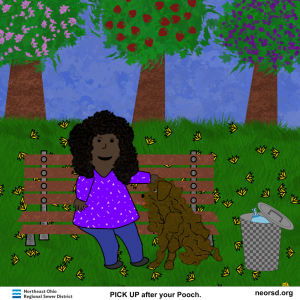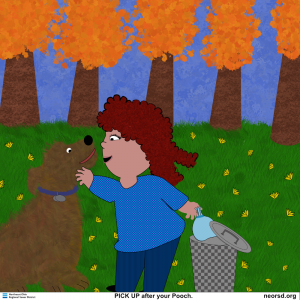The Connection Between the Humanities and the Sciences
STEM (Science, tech, engineering, and mathematics) has been the focus of innovative education methodology since 2001[1], but a crucial part of learning STEM subjects is a firm understanding of language, visual, and physical arts. Without the “A” in STEAM, a well-rounded scientific education cannot be achieved. As a bioengineering researcher at the University of San Diego, California, I am enticed by the world of science. From culturing cells to collecting spectra, I spend time studying Amyotrophic Lateral Sclerosis, or ALS, through cutting-edge biotechnology.
For a lot of my life, STEM subjects were all I took an interest in. Classes like science, integrated math, and even extracurriculars like robotics captivated me in high school—that was until my senior year. Amidst an AP Literature conversation about Tennessee Williams’ The Glass Menagerie, my class talked about the power of memories as building blocks for human identities. As the conversation became more philosophical, I started making connections back to my research work. I realized that neurodegenerative disorders, like Alzheimer’s and ALS, do not simply biologically shatter memories, but they also shatter the emotional experiences in which human life is grounded. Weaving connections between philosophy and bioengineering pushed me to realize that the integration of arts and humanities into STEM education is immensely important.
A Different Way of Thinking
Studying humanities has helped people become better scientists. Successful writers in English classes become efficient in developing strong arguments using approachable language when scientific research language becomes convoluted. The same critical thinking used to analyze literary works can also be used to process and evaluate experiments from different perspectives. Even learning how to write detailed narratives helps to formulate descriptive scientific explanations behind results, thus making numbers more context.
In fact, a firsthand account that underscores the value of arts and humanities in science has been provided by Vinjai Vale, who was recognized for his work in artificial intelligence at Regeneron STS. Vale says that his studies in humanities helped him become “…a better collaborator by helping to sharpen [his] communication skills and compassion.”[2] Talented young scientists only
grow stronger when they learn to value humanities and arts in their science endeavors, just like Vale did.

The Long-Term Benefits to a STEAM Education
There are many other values of incorporating the arts into STEM education. Language, visual, and performing arts curriculum has been proven to increase overall academic performance. In fact, Americans For The Arts Foundation reported in a 2015 study that “Data from The College Board show that in 2015, students who took four years of arts and music classes while in high school (only 18 percent of test-takers) scored an average of 92 points higher on their SATs than students who took only one-half year or less (16 percent of test takers). Scores of 1077 vs. 985, respectively.”[3]
Bridging the Concepts
Visual arts classes help students “…reflect on their scientific studies through creating drawings or paintings,” which also can “be effective for spatial intelligence, which is a crucial attribute of successful STEM professionals”.[4] Simply by “grasping pencils, crayons, chalk and paintbrushes…children develop their fine motor muscles” that can benefit them as they handle delicate scientific experiments. In addition, through “understand[ing] concepts like size, shape, making comparisons, counting and spatial reasoning” students begin to home in on their critical
thinking skills.[5] The numerous benefits that come with integrating arts with science speak to how important it is for all students to get this exposure and opportunity to learn about their interests.
As someone who has learned the value of the “A” in STEAM, I encourage all students to explore different parts of the arts curriculum that entices them. By taking advantage of the arts opportunities, I’ve had around me, I have become a better scientist and student who is able to integrate multiple learning areas into how I approach education. At the end of the day, interdisciplinary learning shapes multi-dimensional thinkers: people that are able to decipher scientific, societal, and global issues.
Special thanks to Northeast Ohio Regional Sewer District –

Connect with Northeast Ohio Regional Sewer District on social media
- https://twitter.com/neorsd
- https://www.facebook.com/yoursewerdistrict
- https://www.youtube.com/user/neorsdccr
- https://www.instagram.com/neorsd/
- https://www.pinterest.com/wallywaterdrop/
Make sure to check out other articles on responsible water and environmental stewardship and STEAM from our blog: STEAM – iN Education Inc. (ineducationonline.org)
Bibliography
- Americans for the Arts. “Arts Facts: SAT Scores and the Arts 1999 – 2015.” Americans for the Arts. Americans for the Arts, May 15, 2019. https://www.americansforthearts.org/by-program/reports-and-data/legislation-policy/naappd/arts-facts-sat-scores-and-the-arts-1999-2015#:~:text=Data%20from%20The%20College%20Board,Scores%20of%201077%20vs.
- Hallinen, Judith, and Kara Rogers. “Stem Education Curriculum.” Encyclopædia Britannica. Encyclopædia Britannica, inc., October 21, 2015. https://www.britannica.com/topic/STEM-education.
- Rymanowicz, Kylie. “The Art of Creating: Why Art Is Important for Early Childhood Development.” MSU Extension. Michigan State University, March 17, 2021. https://www.canr.msu.edu/news/the_art_of_creating_why_art_is_important_for_early_childhood_development.
- Science, Society for. “How Studying the Humanities Made Me a Better Scientist.” Medium. Regeneron Science Talent Search, April 9, 2018. https://medium.com/regeneron-science-talent-search/how-studying-the-humanities-made-me-a-better-scientist-fb4d7cdce529.
- Sprout School Supplies. “Steam – The Importance of Art in STEM Education.” Sprout School Supplies, May 28, 2019. https://sproutsupplies.com/blog/steam-the-importance-of-art-in-stem-education/.























